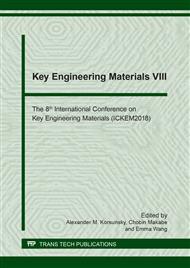p.576
p.582
p.589
p.596
p.603
p.610
p.618
p.624
p.630
Shrinkage Characteristics and Modeling of Cement Stabilized Road Pavement Bases: A Compaction Delay Investigation
Abstract:
One of the main failure modes of a cement-stabilized road pavement base is the shrinkage cracking which could lead to negative consequences up to the failure of road pavements. The compaction time delay and cement content inherently affect to the shrinkage characteristics of the cement stabilized base course. This research aims to investigate the shrinkage characteristics with respect to the compaction time delay of a cement-stabilized base material through laboratory experiments. A series of shrinkage tests were performed on cement stabilized base samples with varying 3%, 4% and 5% of cement contents under controlled compaction delay periods varied from 0.5 hours to 1 day. The results of this study showed that shrinkage values of the study cement stabilized base increase with longer compaction time delay periods and cement contents. In addition, during an early stage (1-14 days) of shrinkage tests, shrinkage sharply increases before reaching the stage of a relatively constant rate after 14 days of testing. It would also be further notice that around 80% of the maximum shrinkage values from all tests gains in a test period between 14-21 days out of 42 days of a total shrinkage measurement period. Finally, the mathematic shrinkage model was formulated based on the test results of the study. In the model, the main factors of compaction delay time, cement content, and curing periods were used as the model variables. Shrinkage values can be predicted with a reliability of the R2 value of 0.6755.
Info:
Periodical:
Pages:
610-617
Citation:
Online since:
August 2018
Price:
Сopyright:
© 2018 Trans Tech Publications Ltd. All Rights Reserved
Share:
Citation:


